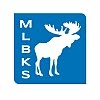For payables, using a code like “cre” can fill in the explanation with Courier Expense, automatically determine that HST applies, and post it to Delivery Expense. Assign a companion code “cr” for use in Expense Recovery, that can be set as taxable and post to Delivery Recovery.
The key to being efficient when setting up codes, is to assign a good, full explanation. The explanations should not be too specific, but rather a generic description of one task that can be used in various circumstances. You can always edit the text to add specifics if you really want to. And, be sure to assign all your the expense and recovery codes to G/L accounts, and set their respective default tax categories.
Setting up explanation codes with the G/L accounts assigned creates a more uniformed system for entries. An explanation code that is not assigned a G/L account, leaves the individual making the entry guessing where to posted the expense, creating random entries dependant on who is doing the work.
For fee entries, the sky is the limit as to how you design your explanation codes. How about “rep” for a real estate purchase, which inserts the following:
“FOR PROFESSIONAL SERVICES RENDERED HEREIN INCLUDING:
TO acting for you as well as the lender with respect to placing a new first mortgage;
TO performing a sub-search of title and to making such other investigations and inquiries as were required by the company providing title insurance to the lender;
TO all correspondence with the title insurance company, and to completing its required forms and documentation, and to reporting to the title insurer after closing;
TO searching for executions;
TO verifying adequate fire insurance coverage;
TO preparation of required documentation;
TO all correspondence with the mortgagee and to providing any required draft documents prior to closing;
TO meeting with you to sign all necessary documents;
TO registering the deed and mortgage;
TO receiving funds from the mortgage advance into our trust account;
TO reporting to you following closing;
TO submitting a final report to the mortgagee;”
Now, is not “rep” a lot faster than doing all that typing?
The sample books in PCLaw have quite an extensive list of explanation codes and task codes, which you may wish to print off and review for ideas. To print a list of codes - Options – Lists – Explanation Codes or Task Codes – Print. Be creative. Try to add as many of your repetitive tasks as possible. When you are done, print off your own list for easy reference.
As always, I invite your comments and suggestions for future posting topics. Next week – How does virtual legal bookkeeping work?
Clyde

No comments:
Post a Comment
I welcome any comments or feedback.
Do you have a question? Do you have a topic for a future article?